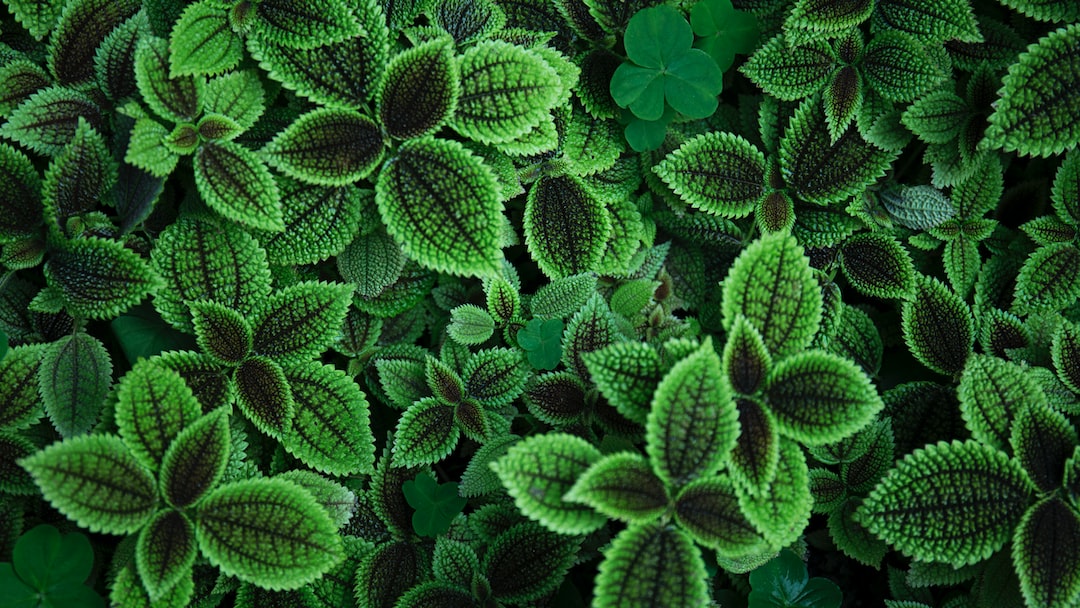Growing Your Own Pecan Tree: A Step-by-Step Guide to Planting from a Pecan Nut

Growing your own pecan tree can be a rewarding and worthwhile endeavor. Not only do pecan trees provide a beautiful addition to your landscape, but they also offer a host of benefits. One of the main advantages of growing your own pecan tree is the ability to enjoy fresh, homegrown pecans. There is something incredibly satisfying about being able to harvest and use your own nuts in recipes or simply enjoy them as a snack.
In addition to the satisfaction of growing your own food, pecan trees also provide environmental benefits. They help to improve air quality by absorbing carbon dioxide and releasing oxygen. Pecan trees also provide shade, which can help to reduce energy costs by keeping your home cooler in the summer months. Furthermore, they attract wildlife such as birds and squirrels, adding to the biodiversity of your garden.
Key Takeaways
- Growing your own pecan tree can be a rewarding and worthwhile experience.
- Choosing the right pecan nut for planting is crucial for a successful harvest.
- Properly preparing the soil and germinating the pecan nut are important steps in the planting process.
- Watering, fertilizing, and pruning your pecan tree are essential for optimal growth and health.
- Protecting your pecan tree from pests and diseases and properly harvesting and storing your pecans will ensure a bountiful harvest.
Step 1: Choosing the Right Pecan Nut for Planting
When it comes to choosing a pecan nut for planting, there are several factors to consider. First and foremost, you’ll want to select a variety that is well-suited to your region’s climate and growing conditions. Pecan trees thrive in areas with long, hot summers and mild winters. Some recommended varieties for different regions include ‘Desirable’ for the Southeastern United States, ‘Western Schley’ for the Southwest, and ‘Cape Fear’ for the Mid-Atlantic region.
Another important factor to consider when choosing a pecan nut is its size and quality. Look for nuts that are large and plump, as these are more likely to produce healthy, vigorous trees. It’s also a good idea to choose nuts that come from disease-resistant parent trees, as this can help to ensure the health and longevity of your own tree.
Step 2: Preparing the Soil for Planting
Pecan trees have specific soil requirements in order to thrive. They prefer well-draining soil that is rich in organic matter. Before planting your pecan tree, it’s important to prepare the soil properly to create the ideal growing conditions.
Start by testing the pH of your soil. Pecan trees prefer a slightly acidic soil with a pH between 6.0 and 6.5. If your soil is too acidic, you can add lime to raise the pH. Conversely, if your soil is too alkaline, you can add sulfur to lower the pH.
Next, you’ll want to amend the soil with organic matter such as compost or well-rotted manure. This will help to improve the soil structure and fertility, providing a good foundation for your pecan tree to grow.
Step 3: Germinating the Pecan Nut
| Step 3: Germinating the Pecan Nut | |
|---|---|
| Germination time | 4-6 weeks |
| Ideal temperature | 70-85°F (21-29°C) |
| Humidity level | 80-90% |
| Watering frequency | Keep soil moist but not waterlogged |
| Light requirements | Full sun to partial shade |
Before you can plant your pecan nut, you’ll need to germinate it. There are several methods for germinating pecan nuts, but one of the most common is the baggie method.
To germinate a pecan nut using the baggie method, start by placing the nut in a plastic bag with some damp peat moss or vermiculite. Seal the bag and place it in a warm location, such as on top of a refrigerator or near a heat source. Check the bag regularly and mist it with water if it starts to dry out.
After a few weeks, you should start to see signs of germination, such as a small root emerging from the nut. Once this occurs, your pecan nut is ready to be planted.
Step 4: Planting the Germinated Pecan Nut
When planting your germinated pecan nut, it’s important to choose a suitable location in your garden. Pecan trees require full sun and plenty of space to grow, so make sure you select an area that meets these requirements.
Dig a hole that is wide and deep enough to accommodate the root system of your pecan nut. Place the nut in the hole, making sure that the root is pointing downwards. Backfill the hole with soil, firming it gently around the nut to eliminate any air pockets.
It’s also important to consider proper spacing when planting pecan trees. Pecan trees can grow quite large, so they should be spaced at least 40 to 60 feet apart to allow for adequate growth and development.
Step 5: Watering and Fertilizing Your Pecan Tree

Proper watering and fertilization are essential for the health and growth of your pecan tree. Pecan trees require regular watering, especially during dry periods. Aim to provide your tree with about 1 inch of water per week, either through rainfall or irrigation.
In addition to regular watering, pecan trees also benefit from regular fertilization. Apply a balanced fertilizer, such as a 10-10-10 or 14-14-14 formula, in early spring before new growth begins. Follow the manufacturer’s instructions for application rates and methods.
It’s important to note that over-fertilization can be detrimental to pecan trees, so it’s best to err on the side of caution and apply fertilizer sparingly. Too much nitrogen, in particular, can lead to excessive vegetative growth at the expense of nut production.
Step 6: Pruning Your Pecan Tree for Optimal Growth
Pruning is an important aspect of pecan tree care that helps to promote optimal growth and nut production. Pruning helps to remove dead or diseased wood, improve air circulation within the canopy, and shape the tree for better light penetration.
The best time to prune pecan trees is during the dormant season, which is typically in late winter or early spring before new growth begins. Start by removing any dead or damaged branches, as well as any suckers or water sprouts that may have formed.
Next, thin out the canopy by removing any crossing or rubbing branches. This will help to improve air circulation and reduce the risk of disease. Finally, shape the tree by selectively pruning branches to maintain a balanced and open canopy.
Step 7: Protecting Your Pecan Tree from Pests and Diseases
Pecan trees are susceptible to a variety of pests and diseases that can impact their health and productivity. Some common pests that affect pecan trees include pecan weevils, aphids, and pecan nut casebearers. Diseases such as pecan scab and powdery mildew can also be problematic.
To protect your pecan tree from pests and diseases, it’s important to practice good sanitation in your garden. Remove fallen leaves and debris regularly, as these can harbor pests and pathogens. Monitor your tree regularly for signs of pest or disease damage, and take appropriate action if necessary.
There are also several organic and chemical control methods available for managing pests and diseases on pecan trees. Consult with a local extension office or arborist for specific recommendations based on your region and the severity of the problem.
Step 8: Harvesting and Storing Your Pecans
The ultimate reward of growing your own pecan tree is being able to harvest and enjoy the nuts. Pecans are typically ready for harvest in the fall, when the outer husks split open and the nuts inside are fully mature.
To harvest pecans, simply gather them from the ground as they fall from the tree. It’s important to handle the nuts gently to avoid damaging them.
Once harvested, pecans should be stored properly to maintain their freshness and flavor. Store pecans in a cool, dry place such as a pantry or refrigerator. They can also be frozen for long-term storage.
Enjoying the Fruits of Your Labor with Your Own Pecan Tree
Growing your own pecan tree can be a rewarding and fulfilling experience. From choosing the right nut to harvesting and storing the nuts, each step of the process offers its own unique satisfaction. Not only do pecan trees provide a beautiful addition to your landscape, but they also offer the opportunity to enjoy fresh, homegrown pecans.
By following the steps outlined in this article, you can successfully grow and care for your own pecan tree. Whether you’re a seasoned gardener or a beginner, growing a pecan tree is a worthwhile endeavor that can provide years of enjoyment and delicious harvests. So why not start growing your own pecan tree today and enjoy the fruits of your labor for years to come?
If you’re interested in learning how to plant a pecan tree from a pecan nut, you might find this article from Lawn World helpful. They provide step-by-step instructions on how to successfully grow a pecan tree from a nut, ensuring that you have a bountiful harvest in the future. Check out their comprehensive guide here for all the information you need. And if you’re looking for more gardening tips and resources, don’t forget to explore Lawn World’s sitemap for a wealth of knowledge. Happy planting!
FAQs
What is a pecan nut?
A pecan nut is a type of nut that comes from the pecan tree. It is commonly used in cooking and baking, and is known for its rich, buttery flavor.
What is a pecan tree?
A pecan tree is a type of tree that is native to North America. It is known for its large, spreading canopy and its ability to produce large quantities of pecan nuts.
How do I plant a pecan tree from a pecan nut?
To plant a pecan tree from a pecan nut, you will need to first crack the nut open and remove the kernel. Then, you will need to plant the kernel in a pot or directly in the ground, making sure to keep it moist and well-drained.
When is the best time to plant a pecan tree?
The best time to plant a pecan tree is in the late fall or early winter, when the tree is dormant. This will give the tree time to establish its roots before the growing season begins.
How much space do I need to plant a pecan tree?
Pecan trees can grow quite large, so you will need to make sure you have enough space to accommodate the tree’s mature size. A mature pecan tree can reach up to 70 feet in height and 40 feet in width.
How long does it take for a pecan tree to produce nuts?
It can take anywhere from 6 to 10 years for a pecan tree to begin producing nuts. However, once the tree begins to produce, it can continue to do so for many years.
What kind of soil do pecan trees need?
Pecan trees prefer well-drained soil that is rich in organic matter. They also require a pH level between 6.0 and 7.0. If your soil is not ideal, you may need to amend it before planting your tree.



